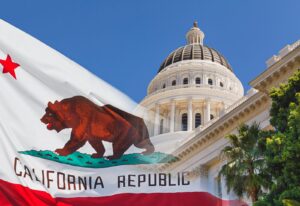Ongoing economic turmoil makes now the right time to discuss U.S. bankruptcies and preference actions.
In the United States and much of the world, inflation is running out of control and there are asset bubbles everywhere you look – housing, real estate in general, used and new cars, and so on. Between the war in the Ukraine, COVID, massive amounts of new money printed during the pandemic, and other factors, it is no wonder that the dreaded “recession” word is making its way back into everyday conversations. Major Wall Street banks, like Deutsche Bank, are now predicting a 30% chance of a recession.
Bankruptcies
To state the obvious, bankruptcy filings go up as the economy goes down. Our last “major” recession was the “Great Recession” of 2008. Even counting the 2019 COVID recession, which was tamed by tremendous government spending and assistance, we were in the longest economic expansion in modern history. The U.S. economy typically runs in 6-to-7-year cycles – where we have 6 to 7 years of economic prosperity and expansion followed by a recession. We came out of the “Great Recession” in 2009, and we experienced economic expansion until 2019.
What can you do to prepare for a recession? In this post, I focus more on manufacturing and supply-related companies, where the company makes parts or products it then sells. Though it always makes good sense to focus closely on your aging account receivables reports, it becomes even more important as signs of a recession start to appear. Clients that once paid in 30 days like clockwork are now starting to pay in 45 or 60 days. It becomes more important to quickly identify your problem clients, as they arise. Because you are selling products on open credit, you are essentially making an unsecured loan to the buyer of your products. Having an outstanding unsecured loan in bankruptcy is not really where you want to be.
Similarly, if you are buying products or services from another company — especially one overseas — it becomes more important to conduct due diligence on your seller so as to avoid paying a company for something and then have that company shut down without providing you what you paid for.
So where does the law come in? Let’s assume you have a great client who has always paid within 15 days of receipt of your invoice for the past few years. This client starts to experience financial difficulties and starts paying you late. First, you are paid 45 days out, then 50 days out, and then 70 days out – and all of these payments are received within 90 days of the client filing for bankruptcy in the United States. You are waiting for your next late invoice to be paid and you receive notice that the buyer filed bankruptcy. You now have very limited options to collect the outstanding invoices, and those late payments may need to be paid by the debtor through its plan of reorganization.
Preference Actions
The bad news. Under the U.S. bankruptcy code, there are actions called “avoidance actions”. One such avoidance action is a “preference”. The legal elements for a preference are (11 USC § 547(b)) as follows:
The trustee (or debtor-in-possession) may, based on reasonable due diligence in the circumstances of the case and taking into account a party’s known or reasonably knowable affirmative defenses under subsection (c), avoid any transfer of an interest of the debtor in property—
(1) to or for the benefit of a creditor;
(2) for or on account of an antecedent debt owed by the debtor before such transfer was made;
(3) made while the debtor was insolvent;
(4) made—
(A) on or within 90 days before the date of the filing of the petition; or
(B) between ninety days and one year before the date of the filing of the petition, if such creditor at the time of such transfer was an insider; and
(5) that enables such creditor to receive more than such creditor would receive if—
(A) the case were a case under chapter 7 of this title;
(B) the transfer had not been made; and
(C) such creditor received payment of such debt to the extent provided by the provisions of this title.
The above is a lot to digest. But, regarding the above hypothetical, we will assume that all of the required elements for a preference are met with the payments received within 90 days of the debtor’s bankruptcy filing. Each one of those payments is subject to a preference action, and if the trustee or debtor prevails on such an action, the creditor must pay back the funds it received for the late invoices. I repeat, the creditor that received money that it was owed must pay back the funds it received from the debtor now in bankruptcy. And this is true for foreign companies, not just American companies.
Is this the end of the story? No. Under the preference statutes, there are exceptions. One such exception is called the “ordinary course” defense (11 USC 547(c)(2)), which is:
The trustee [or debtor-in-possession] may not avoid under a transfer to the extent that such transfer [payment of the invoices] was in payment of a debt incurred by the debtor in the ordinary course of business or financial affairs of the debtor and the transferee, and such transfer was—
(A) made in the ordinary course of business or financial affairs of the debtor and the transferee; or
(B) made according to ordinary business terms.
The ordinary course defense includes two separate defenses – (1) whether the payment terms were ordinary between the debtor and the particular creditor, or (2) whether the payment terms were ordinary for the industry in general. In our hypothetical, was it “ordinary” for the client to pay 45, 50, and 70 days late? Typically, the courts will look at the “pre-petition” payment history between a debtor and a creditor. If the “preference” payment dates fall within the same range of payments made before the debtor filed bankruptcy, then the payments are protected. However, there are no bright-line rules to make this determination. There are many tests that attorneys and experts employ to try to determine if the payments were ordinary.
The second defense – what is ordinary in the industry – is typically determined by expert testimony.
International Clients
Because our law firm focuses on international law, we have represented many foreign companies that were legally required to return the funds they received from a company that went into bankruptcy. We often hear from these foreign clients that the law is not “fair” or it is “arbitrary”. We have heard things from our foreign clients like – “I cannot get my head around this idea” or that “this is not a good look for the U.S. legal system.” Our foreign clients think they are being picked on for being Spanish/Mexican/French/Chinese/German and not Americans. But, that is not the case — the preference laws are uniform, whether you are a US company or whether you are headquartered overseas. And though we do not necessarily disagree that the preference law is arbitrary, the U.S. Congress decided there would be a 90-day preference period (and a one-year look-back period for insiders). The only way to change the preference period, or the preference statutes in general, would be by an act of Congress. Until then, both we lawyers and foreign and domestic companies are stuck with the current preference laws.
However, actually collecting from an international creditor can be difficult, especially when the foreign creditor does not have assets in the United States. Among other things, to initiate a lawsuit against a foreign creditor requires the plaintiff to serve that creditor with the complaint and summons via the Hague Convention. Having done this several times in the past, I can say it is no easy feat and it delays the proceedings. This alone gives leverage to foreign companies facing a preference claim. Though no one can predict what a debtor will do, having to pursue a company located outside the US gives debtors increased incentive to settle these matters, and wise foreign companies and their lawyers can and do take advantage of these types of issues.
Concluding Remarks
The law related to preferences is complex and there are many possible defenses to a preference action. Lawyers in our firm have litigated nearly 500 preference actions, including some that ranged into the hundreds of millions of dollars. However, one ray of hope is that none of these cases proceeded to trial – thus, every case was settled, or, in some cases, dispositive motions were filed that ended the case. Given how amorphous a preference can be, as well as trying to determine if a defense applies, the parties often settle these matters. If you are a creditor facing a preference action/issue you should retain an experienced bankruptcy attorney.






















